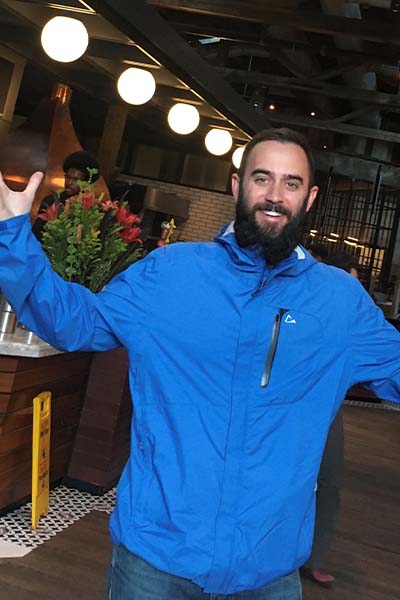If Associated Press (AP) has ever mentioned your (positive) story, then you know how seductive “syndication” is in the PR world. With just one pitch or interview, your news is showcased in hundreds – sometimes thousands – of media outlets. Talk about bang for your pitching buck and skyrocketing click-throughs to your website.
But how do you score such a home run media placement? Surprisingly, it’s pretty simple…if you have the right story. We recently spent 15 Minutes With… AP Travel Editor Beth Harpaz to learn exactly what it takes to catch her attention with a pitch.
Q: How do you decide what stories make the cut for distribution over the AP travel news feed?
A: Well, you have to remember that the AP is first and foremost a news organization, and therefore we take a “news journalism” approach to our story selection. Even quirky, lighthearted things are almost always anchored to a major news angle, and many of the stories I assign or write are already being covered in the news some other way. With the British Royal engagement announcement, you’ll be seeing a lot more stories about London…around the recent World Cup, we showcased several different story angles on South Africa…when new air travel regulations are passed, we might focus on the effect it will have on upcoming seasonal travel or how travelers can adapt to the situation. Any event, announcement, or circumstance that puts a destination in the news gives us an opportunity to extract a story for the travel feed, and the angles we select have to somehow be of interest to travelers all over the world, not just locally. Keep in mind that half of the stories I select for the feed come – not from PR people or company representatives – but from other AP news desks in the U.S. and around the world: business, entertainment, etc. (click here for more AP travel pitching tips)
Q: If someone doesn’t know you, how can they get your attention to review their pitch?
A: I read all my emails, even from people I don’t know, and it takes me just a few seconds to decide whether or not the pitch is of interest. A straightforward email that just says “hey, I’ve got a cool thing that might work for you” is best…there’s no need to try to be clever about it. The subject line and first few sentences of the email should give me a snapshot of the key points, highlighting what makes your story different, quirky, or of interest to readers everywhere. Things that make people say “wow,”…things I haven’t ever seen or heard of before…things that are unexpected…all are reasons I might possibly be interested in a story. Case in point: Indianapolis recently had a big annual civic festival with this year’s theme focusing on food. Well, food festivals are a dime a dozen now all around the world, but at this one? They had a musician performing that actually played instruments made entirely out of vegetables (if you’re interested in learning more…click here). It was the perfect inclusion for a round up of fall events, and I also tweeted about it. I run very few deals (i.e. “third night free”) and packages (i.e. “Blissful Spa Getaway”) so people shouldn’t waste their time pitching me on those, but I do keep an eye out for packages that are tied to events already in the news (i.e. “Eat, Pray, Love Packages” or “Harry Potter Packages” launched in conjunction with the movie releases).
Q: How much detail should someone share in a pitch?
A: Well, I get hundreds of emails a day and craft only a half-dozen or so stories per week. It’s fine to send a whole press release, because it doesn’t change the amount of time it takes me to decide whether or not I’m interested. I’ll still just spend a few seconds scanning the gist of the story to decide if it has merit for AP. Generally speaking, the shorter the better, and if what you send is newsworthy and I want more information…I’ll ask for it.
Q: What annoys you most about being pitched?
A: Follow up calls. Especially repeated follow up calls. I do look at all my emails, and if I’m not getting back to you, it simply means I’m not interested. I try whenever possible to respond with a “no thanks” if I’m not interested, but that’s not an invitation to ask why I don’t want it or hear the angle spun in another way. With the flood of emails and phone calls I receive each day from PR people and others pitching stories, I don’t have the time to explain to everyone why I’m not interested. If I send a “no thanks” email, people should just be glad they received closure. Sometimes, however, I will respond with further instructions for the person to contact me at a later date to revisit the story…and I don’t waste people’s time with stuff like that. If I ask for that, I mean it. And one more thing: I don’t normally do “general, informational interviews,” especially in person. PR people often pitch me that their client’s CEO is in town, and can they come by my office for a chat?…or try to get me to spend some phone time with a client on a get-to-know-you kind of call. To me, it’s rare that these types of interviews have a point. I will do interviews when a particular angle is on my radar screen, but otherwise, I don’t often go on “fishing expeditions” for other news stories. So many timely and relevant stories land on my desk every single day that I have no need to spend my time in this way.
Q: How do you decide when you can write a story “from your desk” and when someone needs to go out into the field to experience things first hand?
A: We try to give coverage to things long before they happen, which gives travelers the opportunity to plan a trip to experience them. In the Indianapolis example described above, it was more important that we cover it BEFORE the date, than to go experience the festival and write about it after the fact. But when we’re doing a destination or neighborhood story, or something that’s a perennial or seasonal story, it’s always my preference to send a reporter and photographer to experience the story first hand. In the case of the “Mud Season Getaways in New England” story you pitched me on a few years ago, I could have just done a round-up of the hotel packages offered, but the unexpectedness of the story seemed worthy of a broader perspective. You don’t think of mud as a reason to travel – more like a reason to stay away – so it was the “man bites dog” aspect of the pitch that attracted me. It was worth my sending in a regional AP stringer/photographer to explore the larger story. When I have the resources and a local AP person to tap for on-the-ground research, I always prefer that to “desk stories.”
Last Q: So, what’s one thing that’s on your radar screen right this very moment?
A: Ireland. I’m swirling around the idea that “Ireland is the new Iceland,” so I’m open for any and all story ideas about Ireland right now.
Want to try your hand at pitching Beth? Email her at bharpaz@ap.org, and follow her on Twitter at www.twitter.com/AP_Travel.
 get travel marketing tips
get travel marketing tips 




